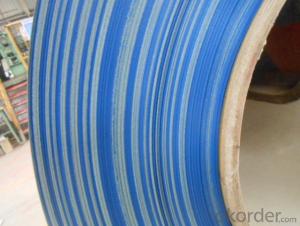The world of construction is a fascinating one, where every piece, no matter how small, plays a crucial role in the final structure. One such element is the reinforcing bar, commonly known as rebar. It’s not just a piece of metal; it’s the backbone of modern construction. But what happens when you need it, and where do you find it? That’s where the market for rebar comes into play.
The Pulse of the Market
The market for rebar is as dynamic as the construction industry itself. Prices fluctuate, availability changes, and trends emerge, all influenced by a myriad of factors. Let’s dive into the heart of this market and understand what makes it tick.
Supply and Demand: The Ballet of Rebar
At the core of the rebar market is the classic dance of supply and demand. When demand surges, usually during construction booms, prices tend to rise. Conversely, during economic downturns, when construction slows, prices may drop. This ebb and flow is not just a financial matter; it’s a reflection of the health of the construction industry and the economy at large.
Factors Influencing Prices
But it’s not just supply and demand that dictate rebar prices. Other factors come into play, such as:
– Raw Material Costs: The price of steel, the primary ingredient in rebar, can significantly affect rebar prices. Geopolitical events, trade policies, and market speculation on steel can all influence these costs.
– Production Costs: This includes labor, energy, and transportation. Changes in any of these areas can ripple through to the final price of rebar.
– Regulatory Policies: Government regulations on construction materials can affect both the price and availability of rebar. For instance, tariffs on imported steel can increase production costs.
– Market Speculation: Traders and investors often speculate on the future prices of commodities like steel, which can create volatility in the rebar market.
The Role of Technology
Technology has also played a significant role in shaping the rebar market. Innovations in production techniques have made rebar more affordable and accessible. Moreover, digital platforms have emerged, allowing buyers and sellers to connect more efficiently, thus streamlining the purchasing process.
Global and Local Dynamics
The rebar market is not just a local affair. It’s a global one. International trade agreements, currency exchange rates, and even political stability in steel-producing countries can all have an impact on the market. However, local factors such as regional construction projects and infrastructure development plans also play a crucial role in determining the demand for rebar in a specific area.
The Human Element
Let’s not forget the human element in the rebar market. The people working in construction, the engineers designing the buildings, and the suppliers delivering the rebar—all have a stake in this market. Their needs, expectations, and actions can influence the market trends and prices.
Navigating the Market
Now that we’ve explored the market dynamics, let’s talk about how to navigate this ever-changing landscape.
Understanding the Market Cycles
Being aware of the market cycles can help you predict price trends and make informed decisions. Keep an eye on economic indicators, construction projects, and industry news to stay ahead of the curve.
Building Relationships
Building strong relationships with suppliers can be invaluable. They can provide you with timely information on price changes, availability, and even potential discounts.
Leveraging Technology
Embrace technology to your advantage. Use online platforms to monitor prices, compare different suppliers, and even place orders. This can save you time and potentially money.
Diversifying Suppliers
Don’t put all your eggs in one basket. Diversifying your suppliers can help mitigate risks associated with price fluctuations and supply disruptions.
The Future of the Rebar Market
As we look to the future, the rebar market is expected to evolve with the construction industry. Sustainability, innovation, and digitalization will likely be key drivers of change.
Sustainability Trends
With the growing emphasis on sustainable construction, the demand for eco-friendly rebar alternatives or production methods may increase. This could lead to new market opportunities and challenges.
Technological Advancements
Advancements in material science and construction technology could potentially disrupt the traditional rebar market. For instance, the development of stronger, lighter, and more durable materials could change the game.
Digital Transformation
The ongoing digital transformation in the construction industry is set to further impact the rebar market. From blockchain for secure transactions to AI for demand forecasting, technology will continue to shape how we buy, sell, and use rebar.
Conclusion
The market for rebar is a complex and ever-evolving landscape. By understanding the factors that influence prices and availability, and by staying agile and informed, you can successfully navigate this market. Whether you’re a contractor, an engineer, or a supplier, your role in shaping the future of the rebar market is significant. So, the next time you look at a building under construction, remember the humble rebar that holds it all together.

